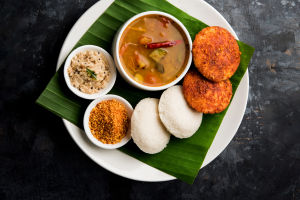Every year on Valentine's Day, Americans express their affection for friends, family, and romantic partners through gifts, greeting cards, and thoughtful gestures, all meant to show just how much they care.
But what about other parts of the world? How do people in different countries celebrate this day of love? And how do their traditions compare to those in the U.S.?
While the core theme of love remains, customs can vary widely. For instance, in Finland, Valentine's Day is less about romance and more about celebrating friendship. Keep reading to discover how different cultures mark this day, and you might find yourself surprised by some of the unique ways people show affection across the globe.
1. Finland
In Finland, Valentine’s Day takes on a different vibe. Rather than focusing on romantic love, the day is dedicated to celebrating friendship, known as Ystävänpäivä (YOUS-ta-van-PIE-vah). The name loosely translates to Friendship Day, and that's exactly what Finns on February 14. Instead of lavish gifts and romantic gestures, they offer small presents and thoughtful tokens to show friends and loved ones how much they're appreciated.
2. Spain
Much like in the U.S., Spain celebrates San Valentín (Saint Valentine) on February 14 with gifts, romantic dinners, and other sweet traditions. However, for some, the true celebration of love comes on October 9. On this day, particularly in the Valencian region, Spaniards Saint Dionysus, who is considered the patron saint of love. The occasion is marked by parades, festivals, and the tradition of men giving silk scarves or marzipan handkerchiefs in a custom known as Mocaorà.
3. Czech Republic
In the Czech Republic, Valentine's Day has become more popular over the years, but the primary celebration of love happens on May 1, known as The Day of Love. Couples traditionally visit the statue of Czech poet Karel Hynek Mácha near a cherry tree grove. To add a romantic touch, lovers kiss under the trees for good luck, making the day both poetic and sentimental.
4. Denmark
In Denmark and Norway, Valentine’s Day is for more than just couples. Friends and family exchange lover’s cards, which range from sweet messages to playful and humorous ones. A unique Danish tradition involves sending a gaekkebrev (snowdrop letter) — an anonymous note written with dots instead of a name. The letter is decorated with paper cutouts and a poem.
5. England
Valentine’s Day in England includes a variety of charming traditions, but one of the sweetest is children singing for their neighbors. In exchange for their tunes, they’re given candy, fruit, or money. Another tradition is the exchange of plum shuttles — sweet buns filled with raisins, plums, or caraway seeds. These are traded as a nod to a bountiful harvest, a gesture of both love and community.
6. France
Known for it's romantic ambiance, France, particularly Paris, celebrates Valentine’s Day with a blend of tradition and passion. Lovers exchange cards, letters, and gifts much like in the U.S. but with that unmistakable French flair. Whether it's over a candlelit dinner or a stroll by the Seine, Valentine’s Day in France is a day to embrace romance in every form.
7. Mexico
In Mexico, Valentine’s Day, or El Día del Amor y la Amistad (The Day of Love and Friendship), isn’t just for couples. It's a day for everyone to celebrate love in all it's forms — whether it’s romantic love, family bonds, or friendships. People exchange flowers, cards, stuffed animals, and other thoughtful gifts, making it a festive day for all.
8. Japan
In Japan, Valentine’s Day revolves around chocolate. If you're someone’s true love, you’ll receive honmei choco (true love chocolate). For friends, family, or coworkers, giri choco (obligatory chocolate) is the gift of choice. Whether it's the coveted true love chocolate or the lighter giri version, it’s a sweet tradition that keeps the spirit of Valentine's Day alive.


